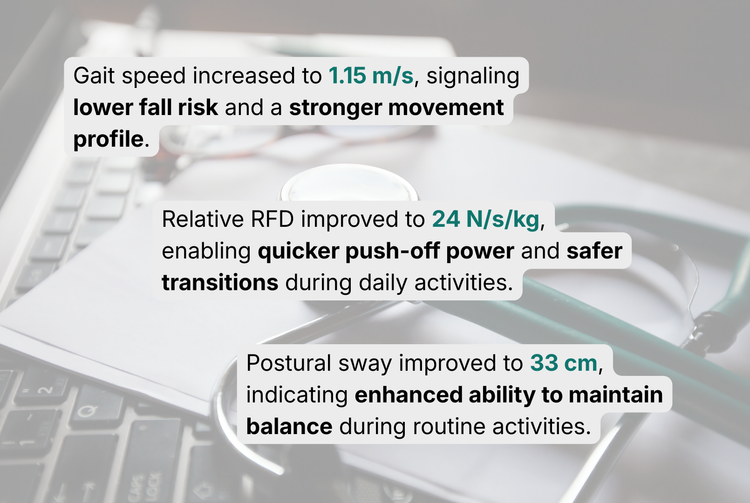
Mobility Support for Primary Care Teams
Moviq Health for Primary Care Practices
Help patients stay independent with biomechanical data, enabling earlier recognition of functional decline, and more confident care planning while keeping clinic flow simple.
HIPAA Compliant · Primary Care Friendly · Built for Modern Clinics
Why Mobility Matters in Primary Care
Care Clarity
- Make mobility easier to address during routine visits
- Identify who may need closer follow up before small issues become bigger ones
- Support referrals and next steps with consistent context
Patient Engagement
- Help patients understand what mobility means for daily life
- Create clearer goals that patients can act on between visits
- Encourage adherence by showing progress in a way that feels tangible
Practice Value
- Strengthen annual and preventive visits with mobility focused context
- Track functional change over time to support continuity of care
- Differentiate your practice with a patient friendly mobility program
Built to fit Primary Care Practice workflows
Identify
Flag patients with mobility concerns, recent falls, or new difficulty with daily activities.
Refer
Send a referral in minutes. Moviq Health handles scheduling and reminders with the patient.
Document
Complete an in-person biomechanics testing that captures 60+ metrics using validated technology.
Review
Receive a report that includes detailed biomechanical metrics and overview written by Doctor of Physical Therapy.
Patient profiles your primary care team want to support more proactively
60+
Older adults
Focus strength
Focus balance
Signal confidence
⚠️
Recent fall or near fall
Risk repeat falls
Plan safety
Support routines
👥
Multiple chronic conditions
Impact endurance
Impact activity
Need monitoring
💊
Medication changes or dizziness
Check steadiness
Check turns
Plan safety
🏥
After hospitalization or ED visit
Need reconditioning
Goal safe return
Support follow-up
👣
New difficulty with stairs or walking
Signal slower gait
Signal unsteady
Check endurance
Informational use only. This content does not diagnose, treat, or recommend specific clinical actions and is not intended for clinical decision-making.

Prevention starts with noticing mobility changes
A simple way to support safer routines and more confident daily movement.
Support clearer mobility conversations in primary care
- Add a simple movement snapshot that supports annual visits and routine check ins
- Improve continuity by tracking movement over time and sharing consistent summaries across the care team
- Provide objective context that can support referrals, wellness planning, and patient goal setting


Add a new way to engage patients in primary care
A simple movement snapshot that supports wellness touchpoints, follow ups, and referrals without adding friction.
- Differentiate your practice with a mobility focused wellness touchpoint
- Support smoother referrals with a clear, shareable movement summary
- Strengthen retention with easy follow up check ins between annual visits

